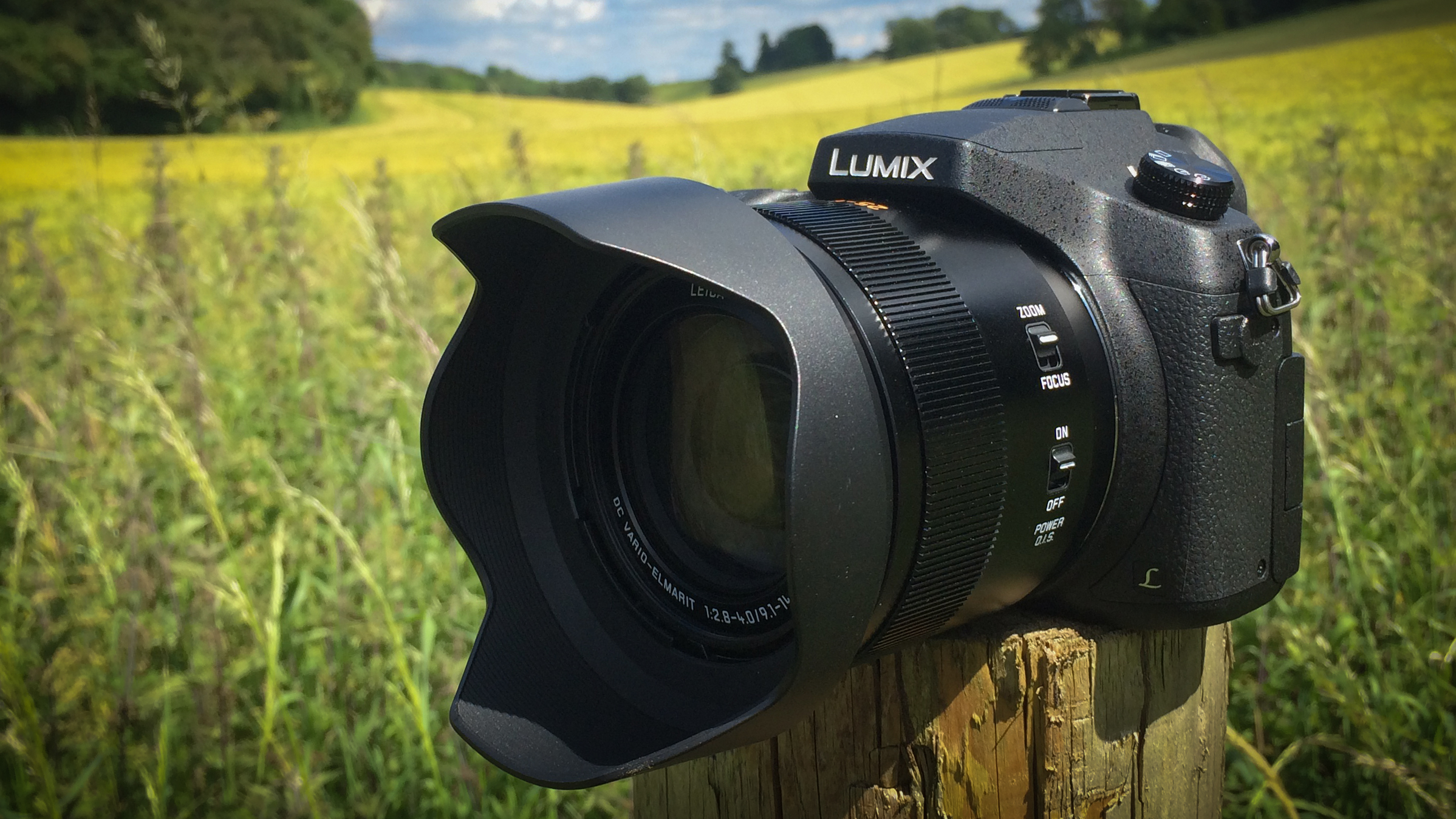Why you can trust TechRadar
We shoot a specially designed chart in carefully controlled conditions and the resulting images are analysed using DXO Analyzer software to generate the data to produce the graphs below.
A high signal to noise ratio (SNR) indicates a cleaner and better quality image.
For more more details on how to interpret our test data, check out our full explanation of our noise and dynamic range tests.
Here we compare the Panasonic Lumix FZ1000 with the Sony RX10, Panasonic FZ200 and Canon Powershot SX50 HS.
JPEG signal to noise ratio
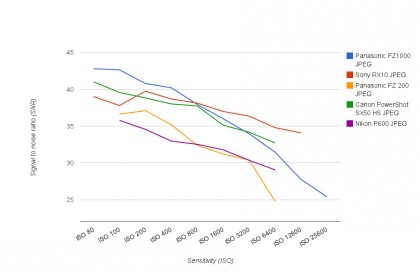
The FZ1000 has the lead for the lower sensitivity settings, indicating that its images are cleaner than those from competing cameras, however, from ISO 800 and above the Panasonic FZ200 takes the lead and the Canon Powershot SX50 HS comes close to the FZ1000's performance. This may indicate that the FZ1000 reveals more noise to allow more detail to be visible.
Raw signal to noise ratio
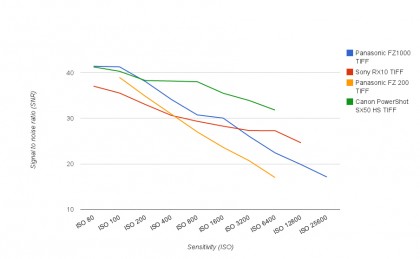
The FZ1000's raw file (after conversion to TIFF) performance is good, but the Canon SX50 HS appears to have cleaner images throughout most of the sensitivity range. The Sony RX10 beats the FZ1000 from about ISO 3200 upwards.
JPEG dynamic range
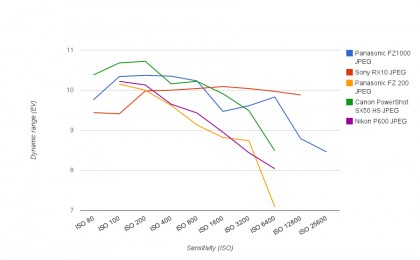
The FZ1000's JPEG dynamic range performance in the lab is consistent with a camera that produces images with pleasant contrast.
Raw dynamic range
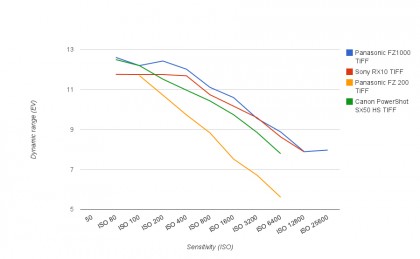
An impressive performance that indicates that the FZ1000 is capable of capturing a wide range of tones in raw files. It beats all the competing cameras here.
Current page: Noise and dynamic range
Prev Page Image quality and resolution Next Page Sensitivity and noise images